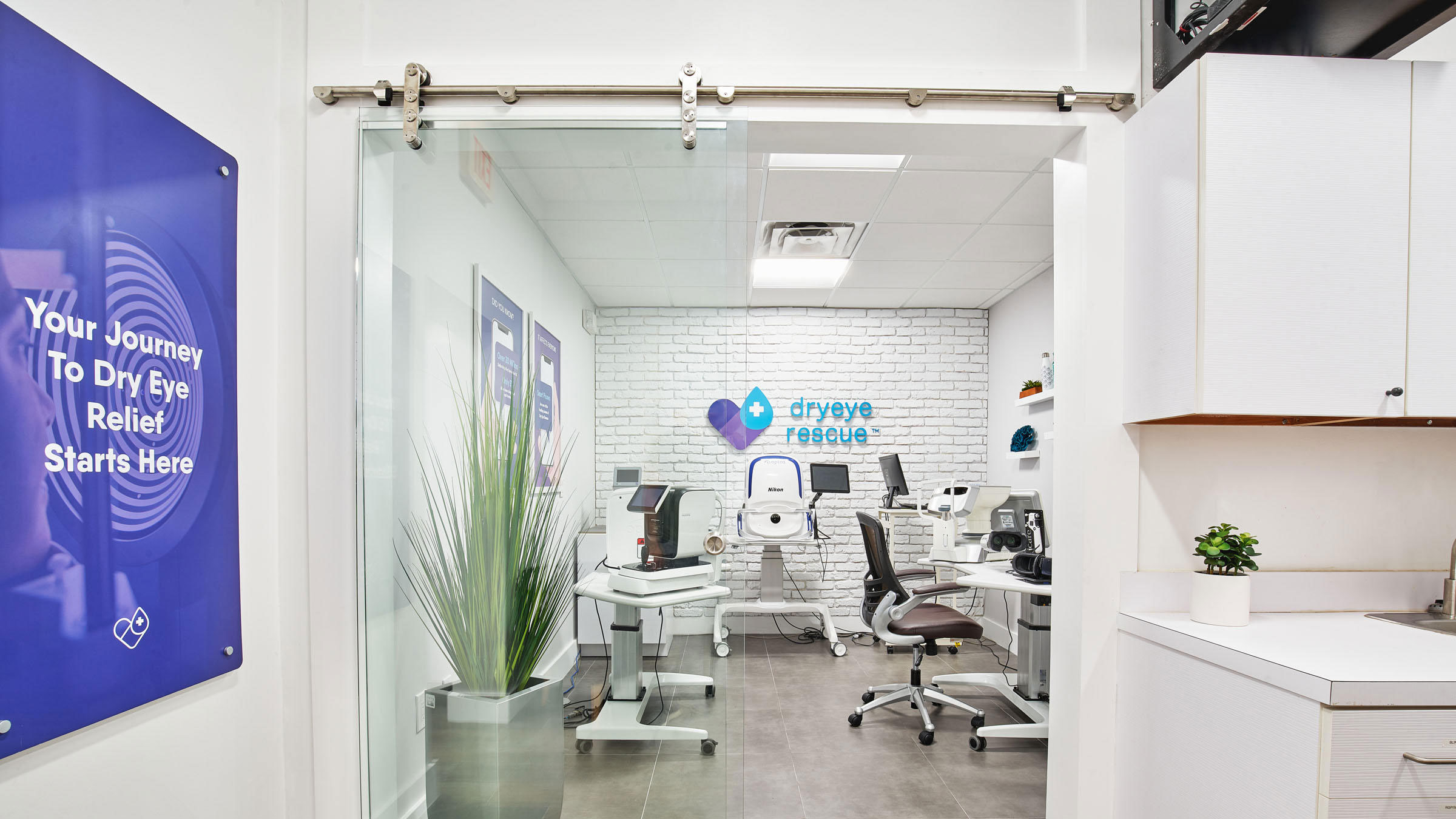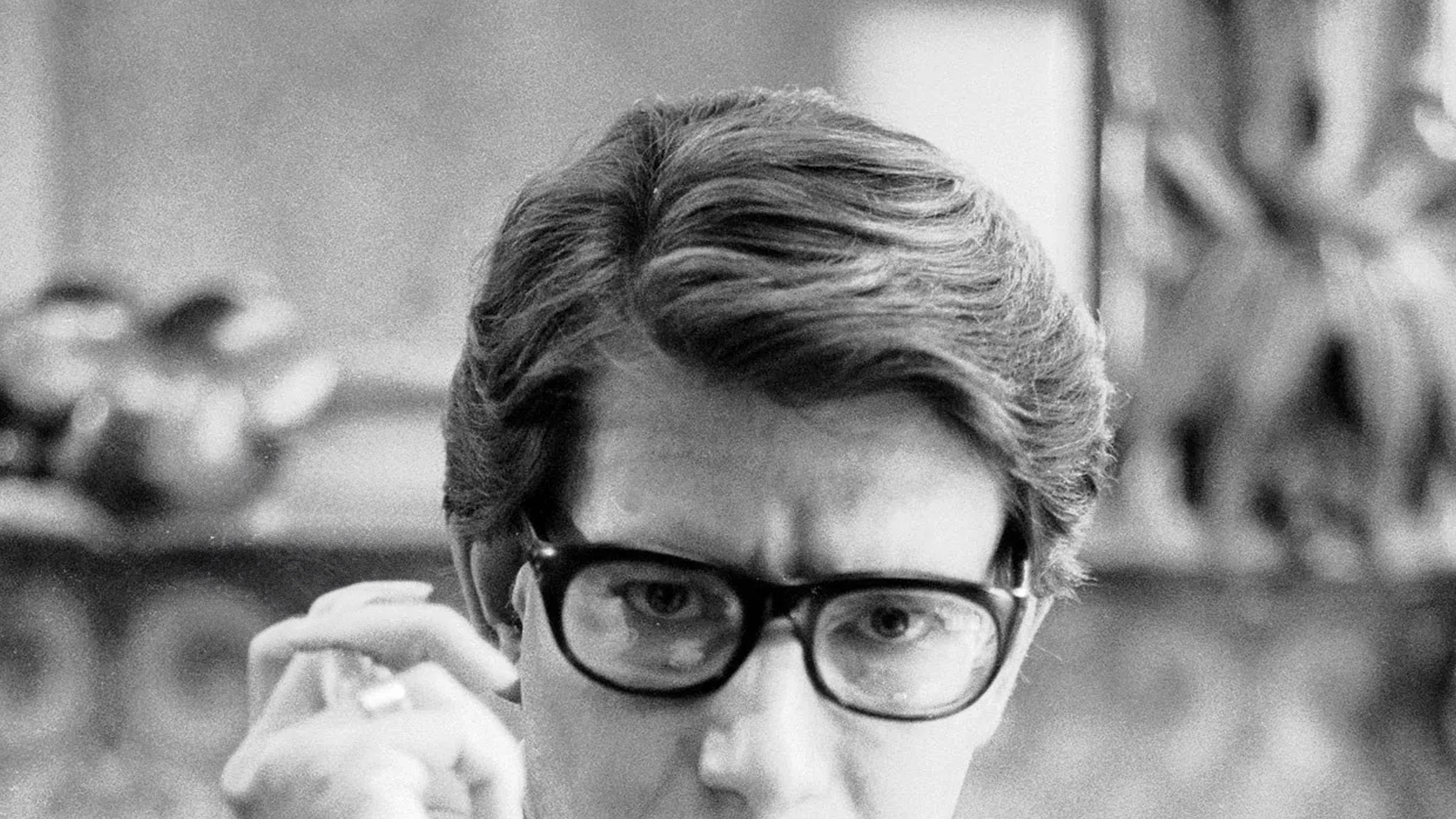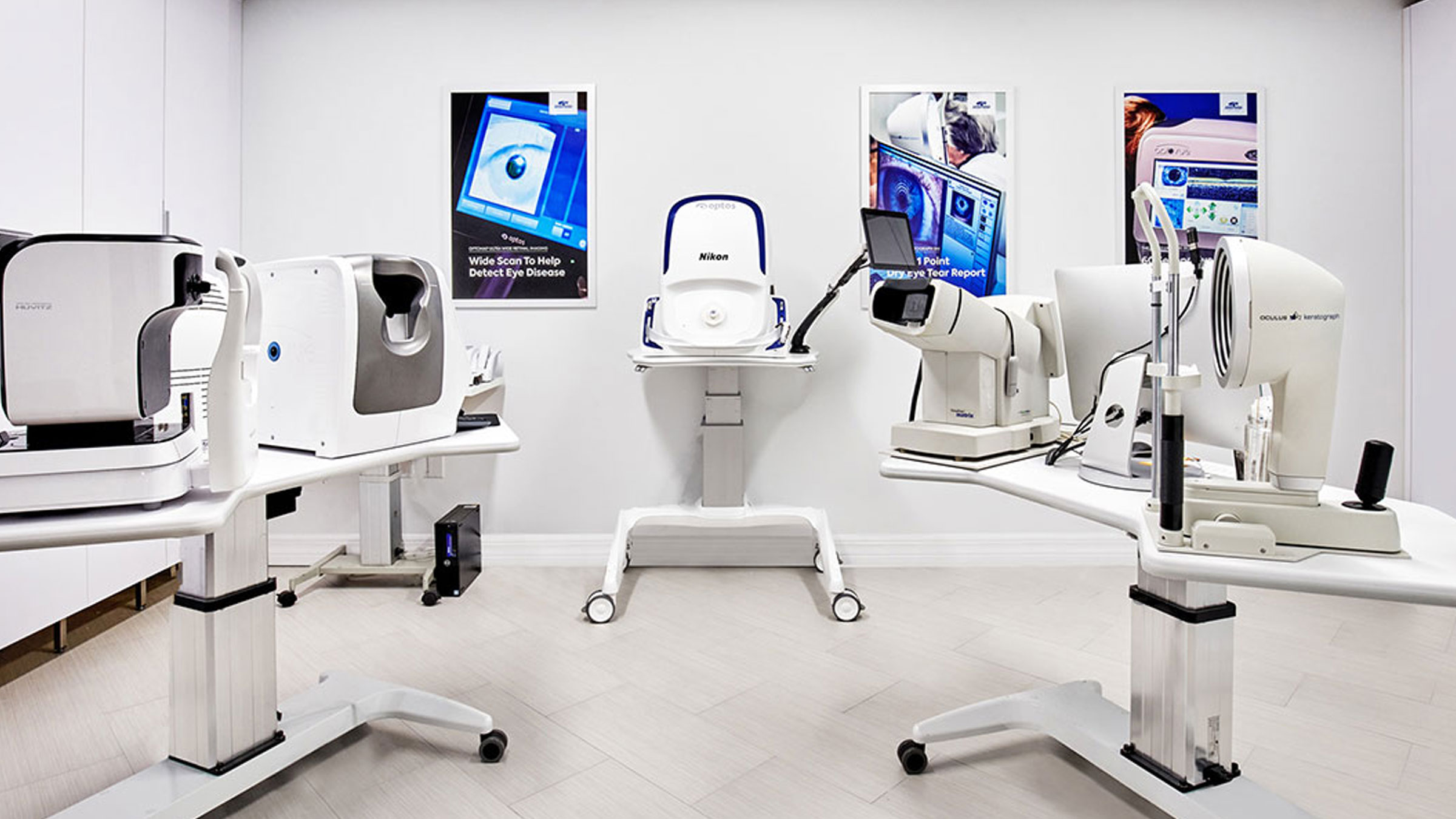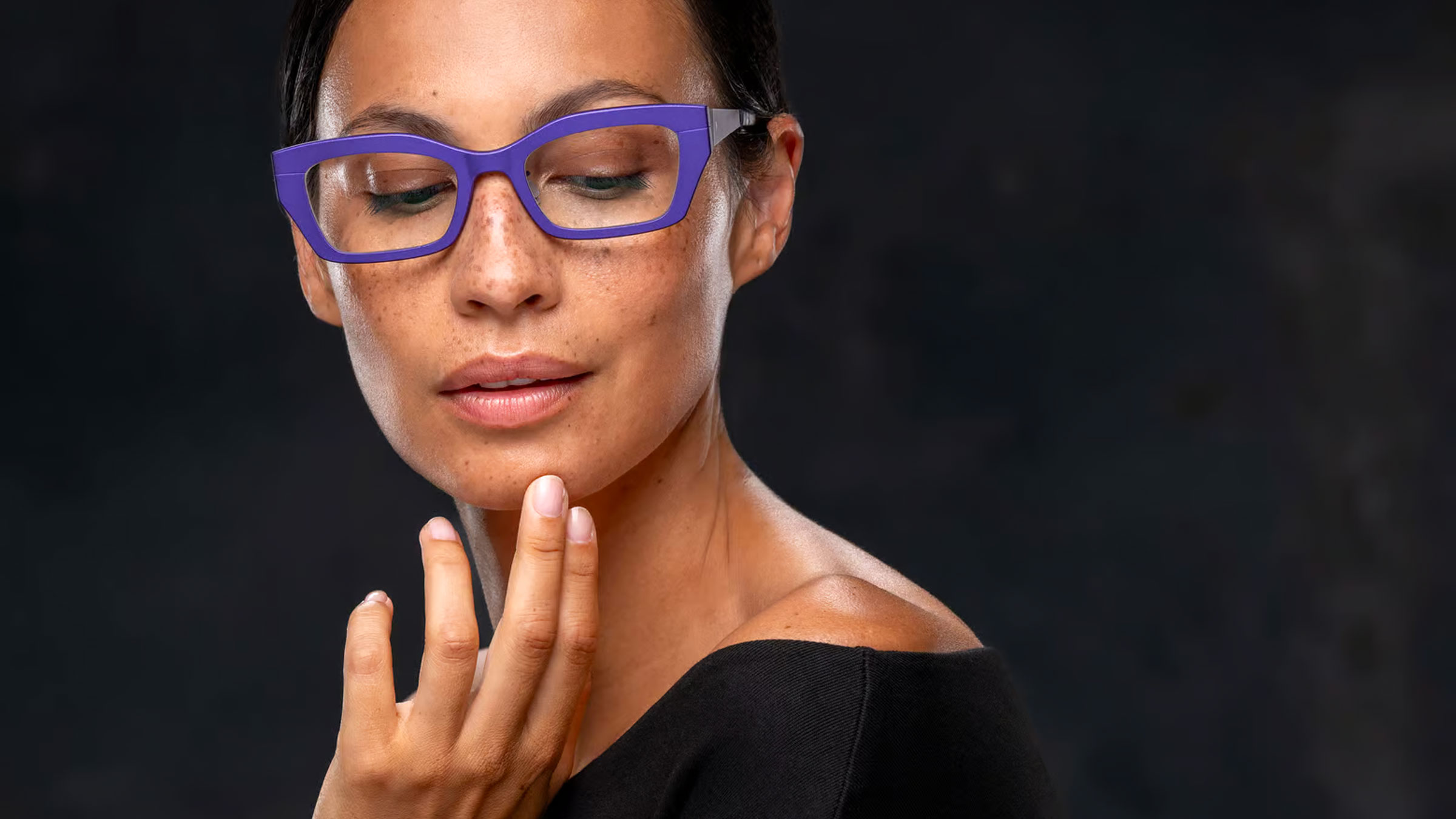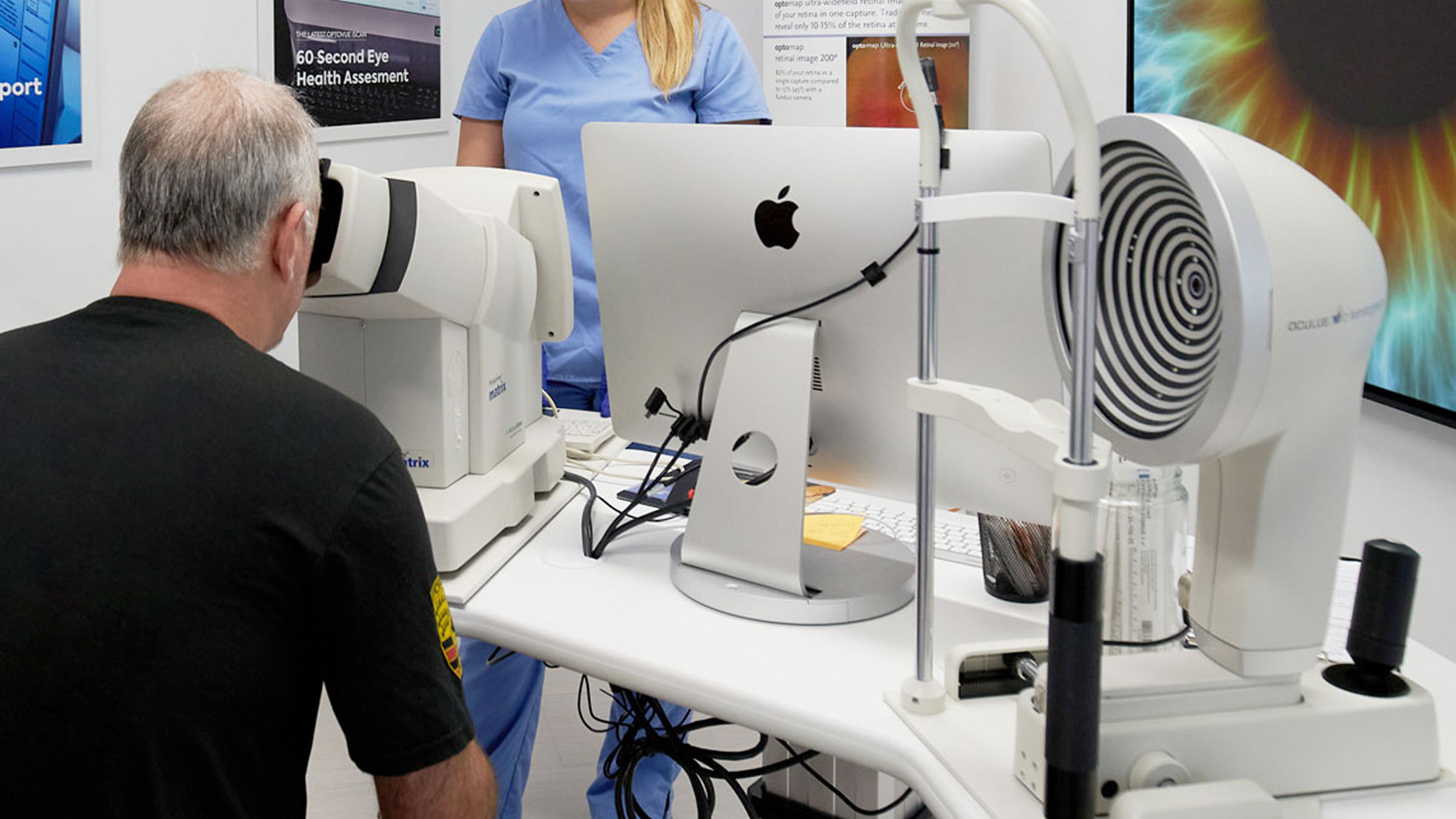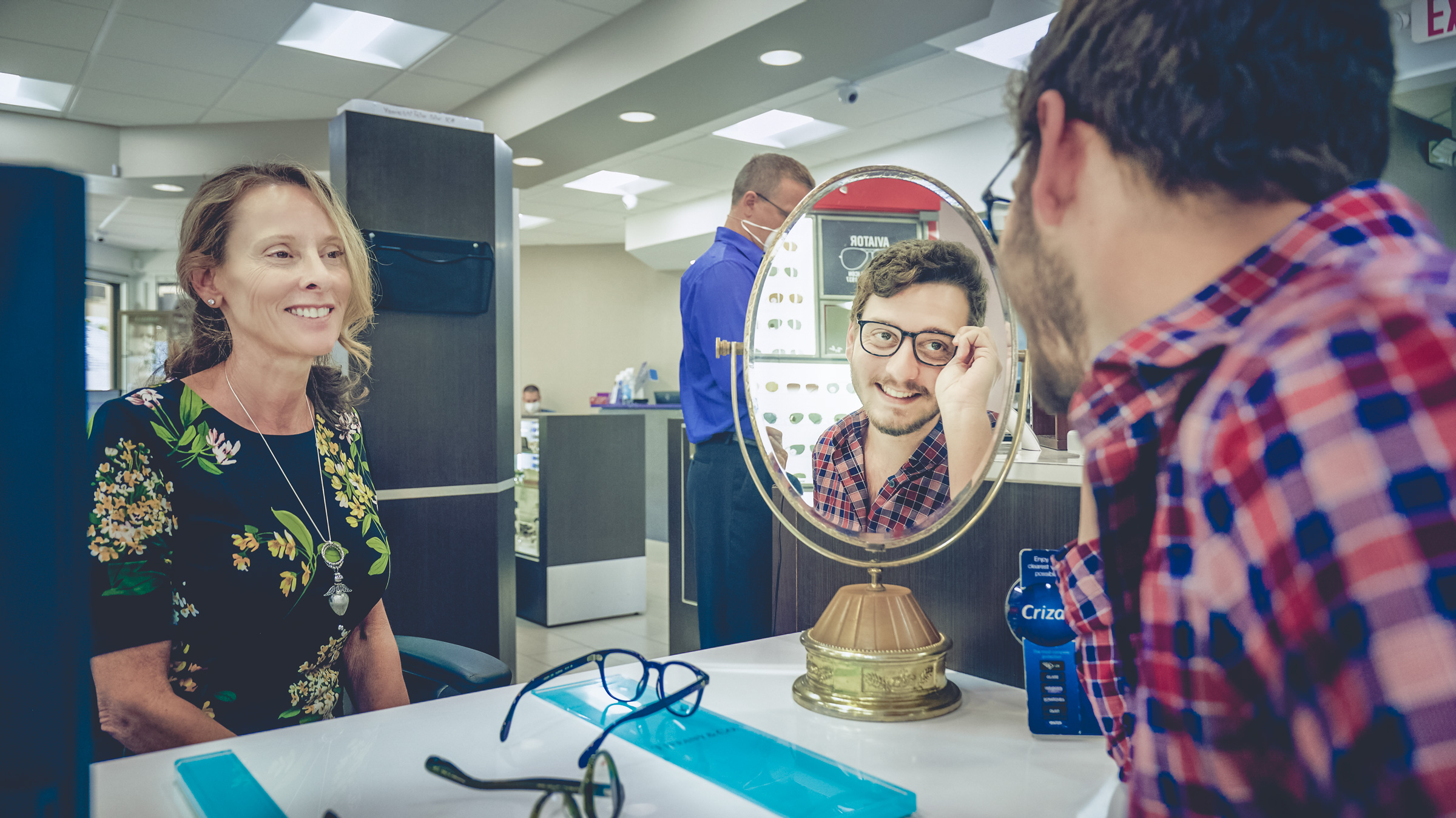This means not only your skin, but your eyes as well! Summer is in full swing and time for fun in the sun is on everyone’s calendar! We all know UV rays are damaging, but did you ever consider how they affect your eyes? Like any other part of your body, your eyes are constantly exposed to harmful UV rays.
Since staying home and enjoying the summer from indoors isn’t something most of us want to do, read on for risks and how you can protect yourself and enjoy this summer!
Sunglasses Matter
Think you’re getting adequate UV protection from your $20.00 sunglasses? There’s a very good chance you’re not. In order to protect your eyes from the sun’s UV and HEV rays, it is important to wear good quality sunglasses that have lenses which will properly block these harmful rays while outdoors.
A good quality pair of sunglasses will block 100 percent of UV rays and absorb most HEV rays. It is important to consult with an optician for help in choosing the best sunglass lenses to fit your needs. At Seaview Optical, eye protection and the latest in eye care technology is our specialty. Our board Certified Opticians will thoroughly evaluate you and determine the best lenses that will provide you with the most protection from harmful sun rays.
As referenced in allaboutvision.com, there are 3 different types of invisible high-energy UV rays, they are UVA/UVB/UVC and they affect your eyes in different ways.
These are closer to visible light rays and have lower energy than UVB and UVC rays. But UVA rays can pass through the cornea and reach the lens and retina inside the eye
Various eye problems have been associated with overexposure to UV radiation.
As an example, UVB rays are thought to help cause pingueculae and pterygia. These growths on the eye’s surface can become unsightly and cause corneal problems as well as distorted vision
In high short-term doses, UVB rays also can cause photokeratitis, a painful inflammation of the cornea. snow blindness is the common term for severe photokeratitis, which causes temporary vision loss usually lasting 24-48 hours.
The risk for snow blindness is greatest at high altitudes, but it can occur anywhere there is snow if you don’t protect your eyes with UV-blocking sunglasses.
These have slightly longer wavelengths and lower energy than UVC rays. These rays are filtered partially by the ozone layer, but some still reach the earth’s surface.
In low doses, UVB radiation stimulates the production of melanin (a skin pigment), causing the skin to darken, creating a suntan.
But in higher doses, UVB rays cause sunburn that increases the risk of skin cancer. UVB rays also cause skin discolorations, wrinkles and other signs of premature aging of the skin.
These are the highest-energy UV rays and potentially could be the most harmful to your eyes and skin. Fortunately, the atmosphere’s ozone layer blocks virtually all UVC rays.
But this also means depletion of the ozone layer potentially could allow high-energy UVC rays to reach the earth’s surface and cause serious UV-related health problems.
HEV Radiation Risks
As the name suggests, high-energy visible (HEV) radiation, or blue light, is visible. Although HEV rays have longer wavelengths (400-500 nm) and lower energy than UV rays, they penetrate deeply into the eye and can cause retinal damage.
According to a European study published in the October 2008 issue of Archives of Ophthalmology, HEV radiation — especially when combined with low blood plasma levels of vitamin C and other antioxidants — is associated with the development of macular degeneration.
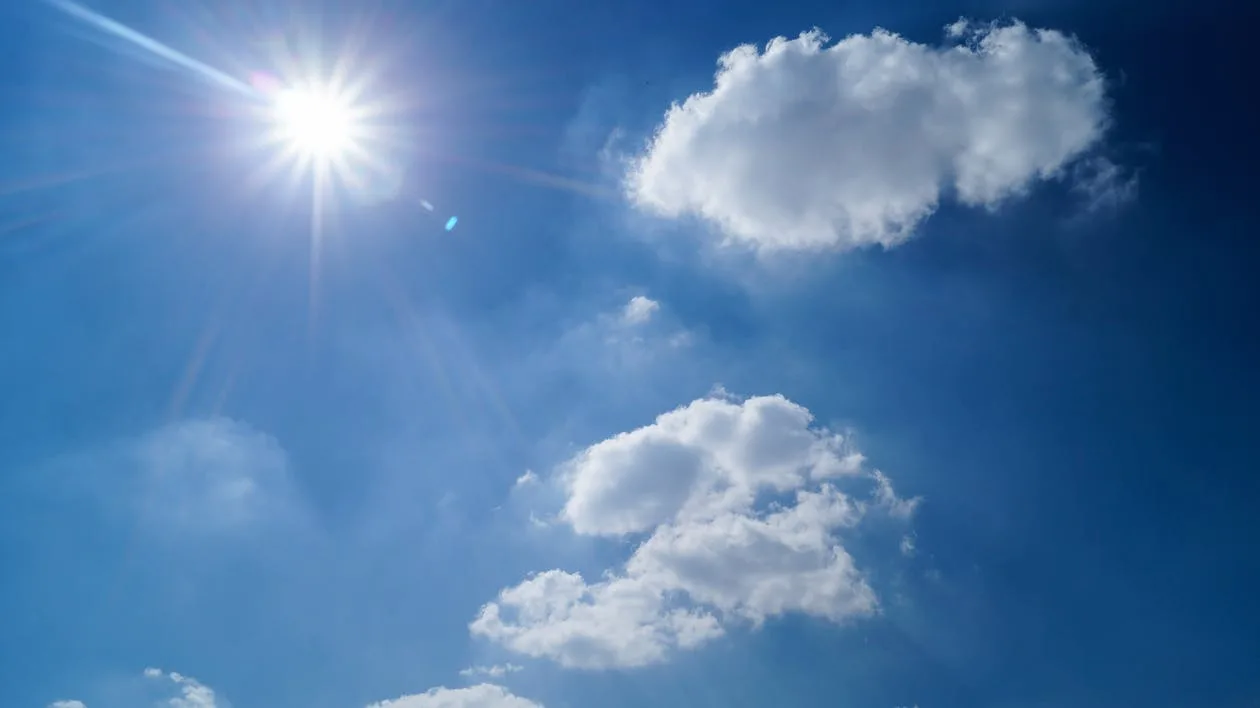
Outdoor Risk Factors
Certain medications, such as tetracycline, sulfa drugs, birth control pills, diuretics and tranquilizers, can increase your body’s sensitivity to UV and HEV radiation.
Surprisingly, cloud cover doesn’t affect UV levels significantly. Your risk of UV exposure can be quite high even on hazy or overcast days. This is because UV is invisible radiation, not visible light, and can penetrate clouds.
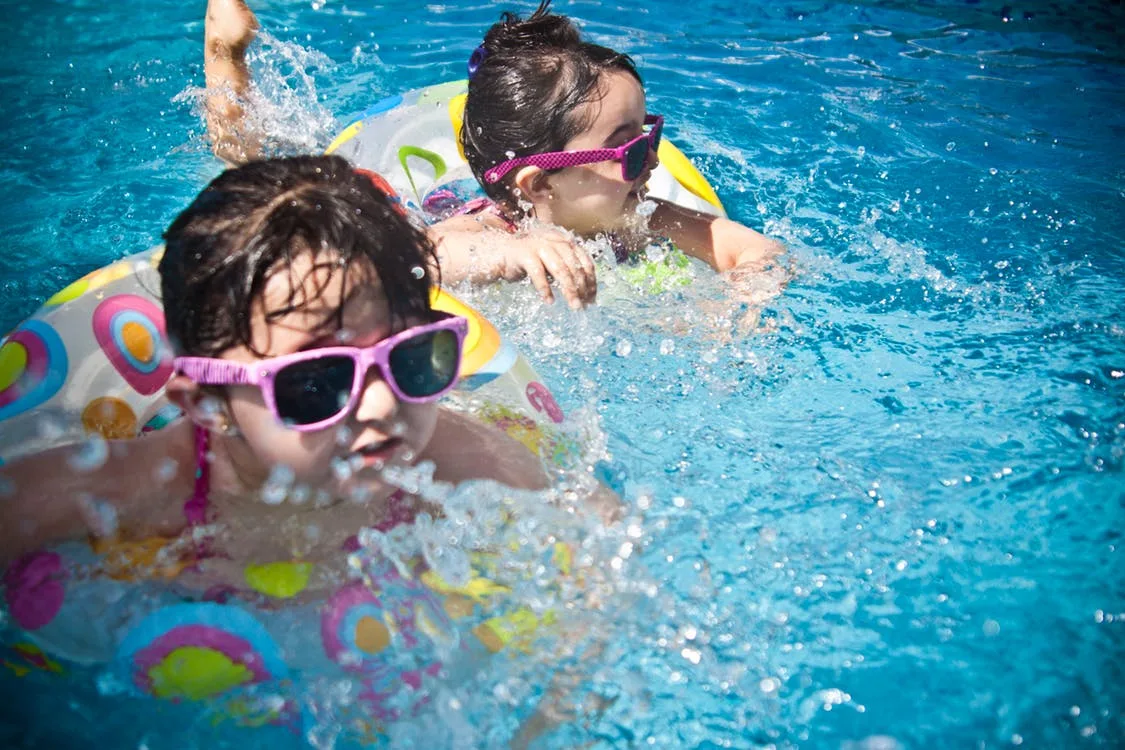
Kids Need UV Protection Even More Than Adults
Since Kids tend to spend a lot of time outside, it is extremely important to protect them as well.
In fact, some experts say that because children tend to spend significantly more time outdoors than most adults, up to half of a person’s lifetime exposure to UV radiation can occur by age 18. (Other research cited by The Skin Cancer Foundation says slightly less than 25 percent of our lifetime exposure to UV radiation is sustained during childhood.)
Also, children are more susceptible to retinal damage from UV rays because the lens inside a child’s eye is clearer than an adult lens, enabling more UV to penetrate deep into the eye.
Therefore, make sure your kids’ eyes are protected from the sun with good quality sunglasses. Also, encourage your child to wear a hat on sunny days to further reduce UV exposure.
More Tips About Sunglasses And UV Exposure
Since Kids tend to spend a lot of time outside, it is extremely important to protect them as well.
In fact, some experts say that because children tend to spend significantly more time outdoors than most adults, up to half of a person’s lifetime exposure to UV radiation can occur by age 18. (Other research cited by The Skin Cancer Foundation says slightly less than 25 percent of our lifetime exposure to UV radiation is sustained during childhood.)
Also, children are more susceptible to retinal damage from UV rays because the lens inside a child’s eye is clearer than an adult lens, enabling more UV to penetrate deep into the eye.
Therefore, make sure your kids’ eyes are protected from the sun with good quality sunglasses. Also, encourage your child to wear a hat on sunny days to further reduce UV exposure.

